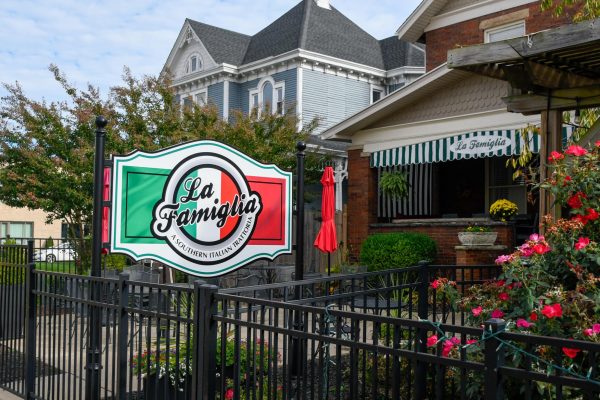PROGRESSIVE PERSPECTIVE: Working-class populism will defeat President Trump
For Democrats to take back the White House in 2020, the party must nominate a pro-labor candidate capable of winning back working-class voters of the 206 “pivot counties” that voted for President Barack Obama in both 2008 and 2012 then for President Trump over Hillary Clinton in 2016.
As explained in a 2016 article in The Atlantic, “By dislodging Pennsylvania, Wisconsin and possibly Michigan, Trump shattered the blue wall—the 18 states (plus the District of Columbia) with 242 Electoral College votes that had voted Democratic in at least each election since 1992. If Clinton had defended the blue wall through the Rustbelt, she would have won…”
According to polls and to many voters on the ground, the candidate to win back that “blue wall through the Rustbelt” is Sen. Bernie Sanders, I-Vt., who has for decades been fighting against corporate interests and in favor of populist progressive values and building a working-class political revolution across the country.
Working-class rustbelt voters who won both elections for President Obama care most about issues such as trade, jobs and the economy. Clinton failed to appeal to such voters as Trump criticized her from the left for her support of NAFTA, which led to the outsourcing of hundreds of thousands of blue-collar jobs to Mexico, her ties to Wall Street and other corrupt corporate interests and various other neoliberal policies. Any Democratic candidate with similar vulnerabilities will lose to President Trump as well in 2020.
As Richard Sorokas, a 2016 Trump voter from Pennsylvania, explained in a 2017 CNN segment, “People were desperate to work, and a lot of people are going back on welfare and counting on the government. People were struggling for any type of work…”
Sorokas and his wife, Eileen, are registered Democrats who voted for President Obama twice and even volunteered for his campaign.
People like Richard and Eileen voted for Obama in 2008 and 2012 hoping for real change to a system that had left working-class families like themselves across the country struggling, living paycheck-to-paycheck and one medical bill away from bankruptcy. A mostly lackluster Obama presidency left such voters mostly disappointed and desperate for the radical change Obama had campaigned on to get elected. They felt a neoliberal Clinton presidency offered them no such change. Trump, at least, was an outsider who seemed certain to shake up the failed, corrupt system, to “drain the swamp” he has since proven himself to have been swimming in all along. Many Trump voters themselves knew his populist rhetoric may have been insincere, but they were willing to take a chance on real change rather than voting for more of the same.
One such voter in West Virginia was Michael Caudill, who I interviewed during a 2018 Trump rally in Huntington. Caudill, a retired construction manager, said he was a registered Democrat who voted for Obama then for Trump over Clinton. He, too, was turned away by the corruption of the Clinton campaign and the Democratic Party’s abandonment of working-class, blue-collar voters and said that Trump’s rhetoric reminded him of Democrats he supported in his youth.
“Sometimes Trump talks like a Democrat from the 50s, 60s or 70s,” Caudill said. “The more I listened to Hillary, the less I thought she would help us. The more I listened to Trump, the more he made sense to me.”
For too long, the Democratic establishment and corporate media outlets have operated on the myth that neoliberal, corporate, “moderate” and “centrist” Democrats appeal more effectively to Rustbelt working-class voters than leftist, populist progressive, anti-establishment “outsiders” like Sanders. Past election results and reliable polls simply do not support this premise.
The losses in recent presidential elections of right-wing Democrats such as John Kerry, Al Gore and Hillary Clinton, who were considered by the Democratic establishment and corporate media to be “safe” candidates, combined with the losses of more than 800 legislative seats and over a dozen governorships during the Obama administration might have served as a warning the American public of the vulnerability of “moderate” Democrats, but that remains to be seen in 2020. If Democrats nominate another candidate perceived by working-class Americans to be an insider and an upholder of a broken and corrupt political establishment rather than an outsider working to institute radical, pro-labor change, no one should be shocked when Trump wins again.
On the other hand, nearly every poll in the last four years has shown that a populist progressive Sanders campaign would likely defeat the faux-populist rhetoric of a Trump campaign.
For a demonstration of the appeal of the working-class populism of the Sanders campaign, look no further than the 2016 Democratic primary results in West Virginia. While Clinton was seen by desperate voters as a corrupt D.C. “insider” promising nothing more than politics-as-usual, the Sanders campaign won all 55 counties in the state by organizing a political revolution on the basis of left-wing populist ideas such as universal healthcare and college, rebuilding crumbling infrastructure, converting to renewable energy, legalizing marijuana, implementing a wealth tax and comprehensive immigration reform.
Despite the political establishment’s bipartisan consensus that only “moderate,” “centrist” Democrats can appeal to blue-collar workers by moving to the right on policy positions, populist left-wing ideas such as those represented by the Sanders campaign consistently poll well with voters of all backgrounds across the country. Policies such as eliminating medical debt and student loan debt, Medicare-for-All, tuition free higher education, ending the wars and legalizing marijuana are supported by a majority of voters in both major parties and inspire independents and the otherwise politically inactive to vote as well. That Democrats would not run campaigns on these issues should be baffling.
In addition to his campaign’s over performing with self-described conservative voters and doubling Clinton’s support with independents in 2016, Sanders can also lay claim to the reality that he has built a grassroots movement and donor base more massive than those of Trump and every other 2020 Democratic campaign.
If Democrats wish to defeat Trump in 2020, the party would be wise to support and empower rather than to smear and silence such an unprecedented working-class movement.
Douglas Harding can be contacted at harding26@marshall.edu.
Your donation will help continue the work of independent student journalism at Marshall University. If you benefit from The Parthenon's free content, please consider making a donation.












Susan Anthony • Feb 5, 2020 at 2:53 pm
Note: The National Popular Vote bill is 73% of the way to guaranteeing the majority of Electoral College votes and the presidency to the candidate who receives the most popular votes in the country. It would change state winner-take-all laws (not mentioned in the U.S. Constitution, but later enacted by 48 states), without changing anything in the Constitution, using the built-in method that the Constitution provides for states to make changes.
It requires enacting states with 270 electoral votes to award their electoral votes to the winner of the most national popular votes.
All voters would be valued equally in presidential elections, no matter where they live.